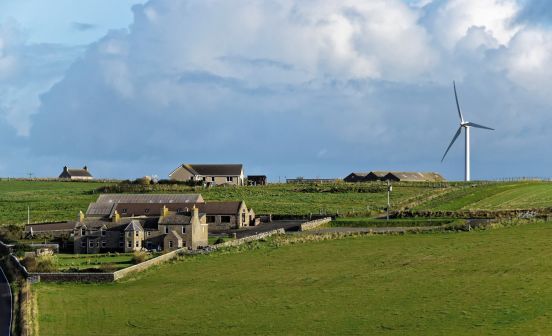Transformation is on the horizon for Scottish agriculture. Changes to trade and agricultural support will happen – regardless of the Brexit outcome. It has never been more critical to review your business and assets to secure extra value income. We’re talking to several landowners who are looking to unlock land for potential development.
Development goes beyond large scale housing adjacent to conurbations. There will continue to be opportunities for small scale developments across rural Scotland. Every Council has a Local Development Plan (LDP), and potential development land can be considered against this policy. Whilst there is generally a presumption against development in the countryside, there are prospects.
Traditional steading developments, re-development of derelict properties, brownfield sites (redundant farm steadings), gap sites and single house sites, offer potential for development where they conform to policy. If you consider this option, we recommend a ‘Pre-Application Enquiry’ is made with the Planning Department prior to the submission of your Planning Application.
Where agricultural land is owned adjacent to settlements there are a number of options available to secure development:–
Secure an allocation within the LDP through their 5 yearly review process. Each Council manages their own LDP and they are all reviewed at different times. During their cycle, Councils invite potential development land to be put forward. Proposals are scrutinised by the Planning Department and the public (through consultation). Selected plots are carried forward into the new LDP as development sites with the effect of almost certain development approval.
By obtaining an allocation in the LDP, a landowner secures an enhanced land value and is in control over the future of the site. It is worth noting that sites located outside the LDP can still be brought forward for planning – where there is a housing shortfall or where there is a deliverable alternative site.
It is also worth noting there are proposals to reform the Planning system, including the potential extension to the LDP cycle to 10 years. So, what is the current position with our Councils?
Angus Council : The Current LDP was adopted in September 2016, review due 2021 where there will be focused Development Strategy Sessions with Stakeholders instead of a “call for sites”.
Fife Council: The FIFEplan was adopted September 2017. The next “call for sites” has not been set.
Perth & Kinross Council : The 2014 LDP is currently under review, likely to be adopted later this year.
Aberdeenshire Council: The LDP was adopted April 2017. A “call for sites” took place last year with a view to a new Plan from 2021. The submitted sites are being reviewed through Stage 2.
A potentially cheaper alternative to securing an LDP allocation, is for a landowner to enter into an‘Option Agreement’ with a property developer. The developer undertakes all the work and costs associated with obtaining planning consent and the landowner is bound to sell to them at a pre-agreed formulaic price. Going down this road, the landowner is protected from the cost of obtaining planning – which in the case of large projects, can be considerable – but they are tied into selling to one developer.
Land Promoters offer a similar proposal to the Developer, but as they do not develop the sites themselves, the land can be offered up on the Open Market at point of planning being secured.
So, whether you have a traditional steading, a derelict property or land adjacent to a town or village – it is worth considering if development is an opportunity to realise the best return on your land.
Rhona Booth is Associate Director at Davidson & Robertson – Rural Surveyors and Consultants in Forfar, contact 01307 490 220. www.drrural.co.uk.



